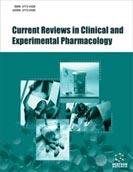Abstract
Sublingual route increases the efficacy of the drug by dissolving in few seconds in the oral cavity. Being a fast dissolving tablet the sublingual tablet is mostly acceptable in an emergency because it does not require chewing as well as water for administration. An important advantage of the sublingual route is that it bypasses the hepatic circulation of the drug ultimately increasing the bioavailability of the drug with rapid onset of action and patient compliance. It is a very suitable route of administration especially for pediatric, geriatric and psychiatric patients having difficulty in swallowing (dysphagia). Sublingual route is more permeable as compared to buccal and gingival route due to the rapid onset of action of the drug when administered by sublingual route. In the developing countries vaccination for the prohibition of various diseases is routinely done so sublingual route is the most preferable because of the large surface area and immunological competence. Mucosal tissues are attractive administration and target sites for vaccination. This review focused on the different sublingual dosage forms, advantages, and factors affecting sublingual absorption, methods of preparation and various in vitro and in vivo evaluation parameters of the sublingual tablet.
Keywords: Sublingual delivery, bioavailability, sublingual tablet, first pass, oral drug administration, drug delivery system.
Graphical Abstract
 63
63 4
4 1
1 1
1



